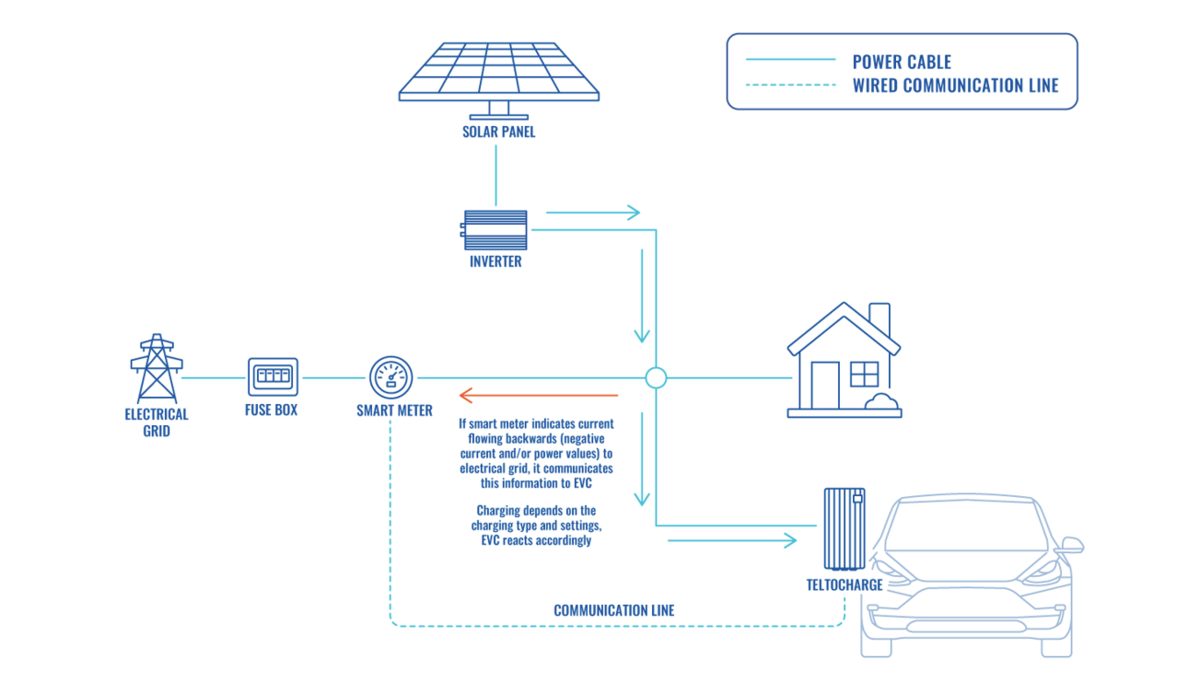Solar integration
From Wiki
Main Page > TeltoCharge > Advanced Topics > Solar integration
Solar overview
-
Solar integration with electric vehicle (EV) charging stations is an innovative and sustainable approach that combines solar power generation with the charging infrastructure for electric vehicles. Couple examples why this integration is important:
- Solar-integrated TeltoCharge can be connected to the local electrical grid, allowing it to draw power from the grid when solar energy production is insufficient or when there is a high demand for charging. This ensures uninterrupted charging availability for EV owners.
- Solar Power Offset: When solar panels produce excess electricity that is not immediately consumed by TeltoCharge, it can be fed back into the electrical grid. This process, known as net metering or feed-in tariff, allows the solar system owner to earn credits or receive compensation for the surplus energy supplied.

Solar integration components
-
In order to make Solar functionality work, these components are included:
1. Solar Panels: Photovoltaic (PV) solar panels are the primary component for generating electricity from sunlight. These panels consist of multiple solar cells that convert sunlight into direct current (DC) electricity.
2. Inverter: The DC electricity produced by the solar panels needs to be converted into alternating current (AC) electricity, which is compatible with the electrical grid and charging equipment. An inverter is used to perform this conversion.
3. Charge Controller: A charge controller manages the flow of electricity between the solar panels, battery storage (if present), and the TeltoCharge. It regulates the charging process to optimize energy usage, protect the battery (if used), and ensure safe and efficient charging.
4. Battery Storage (Optional). These batteries store excess solar energy during periods of high generation and supply the stored energy during low or no solar production, ensuring a consistent power supply to the EV charging stations.
5. TeltoCharge.
6. Electrical Distribution System. This involves proper wiring, circuit breakers, and distribution boards to ensure the safe and efficient transfer of electricity to the charging stations.
7. Energy Management System. It may include software algorithms, monitoring systems, and control mechanisms to prioritize charging during peak solar production, balance loads, and manage energy flow between the solar panels, battery storage, and charging stations.
8. Grid Connection and Metering. Proper metering systems, such as net metering or feed-in tariff meters, may be required to measure the solar energy fed back into the grid or the energy drawn from the grid.
These components work together to create an integrated system that harnesses solar energy to power the TeltoCharge. The specific configuration and components may vary depending on factors such as the scale of the installation, available space, energy requirements, and desired functionalities.